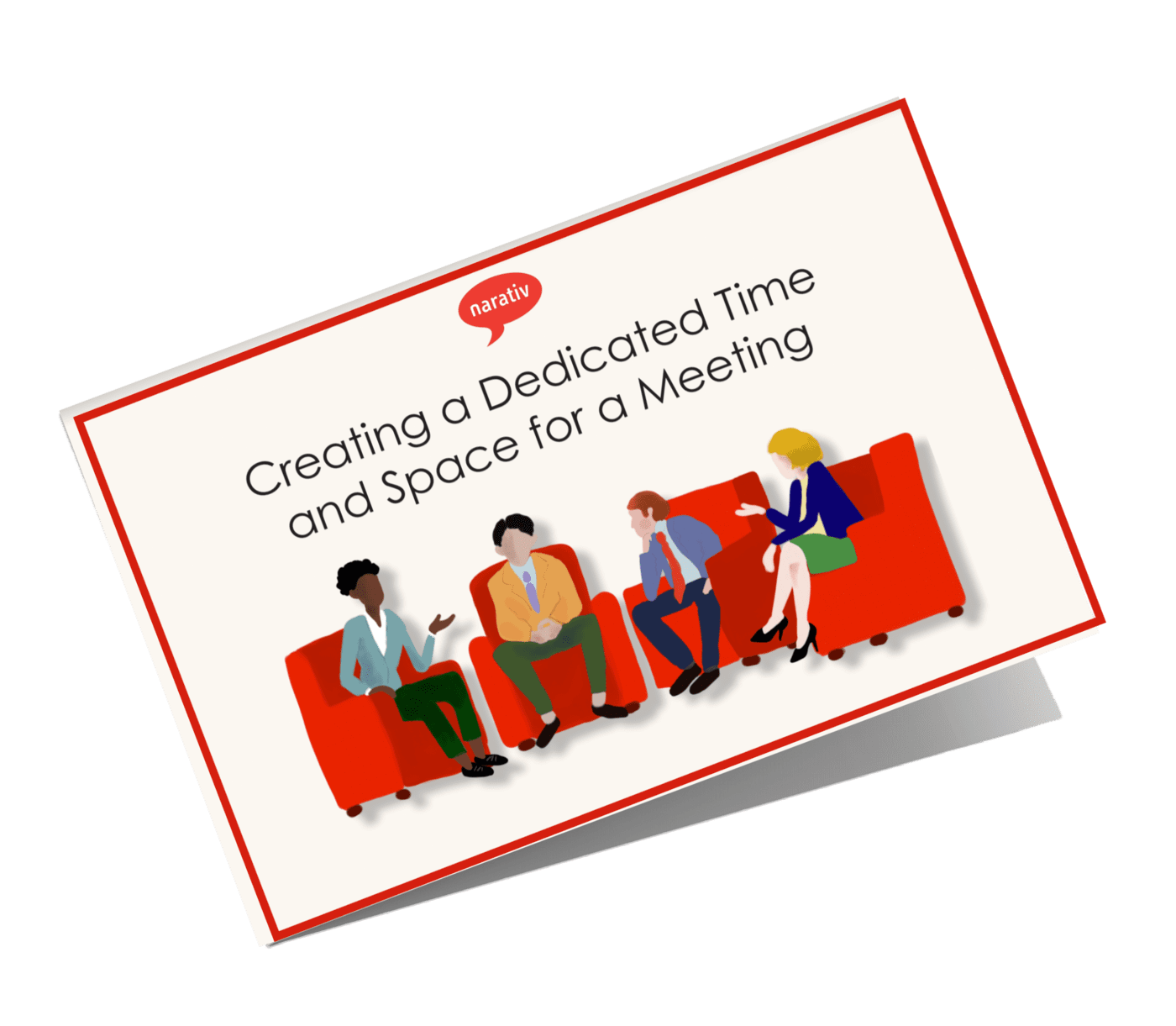Think about a great story that you’ve heard recently. What are the parts of the story that really made an impression on you?
Was it the subject matter? Delivery? Visual presentation?

These are all important and valid parts of a great story. However, when it comes to hitting a home run with your storytelling, there is a formula that the “Most Valuable Players” use to keep their audiences engaged and entertained.
Aptly, I call it the M-V-P:
- Memorable: [definition] Worth remembering or easily remembered, especially because of being special or unusual
- Vulnerable: [definition] Uncertainty, risk, and emotional exposure
- Present: [definition] Fully conscious of the moment and free from the noise of internal dialogue.
How do MVPs bring the head and the heart together for your listener? I had the chance to speak with the CEOs of some of the top startup companies about their experiences with these three essential aspects of storytelling.
Here’s what they had to say about how they leverage this formula in their own MVP storytelling experiences.
Make Yourself Memorable
 “I tell stories to spark the audience’s emotions and ultimately get them to listen, to help achieve my goal and get the message across. More often than you might think, I do this just to wake them up after countless other pitches or talks they’ve listened to before.”
“I tell stories to spark the audience’s emotions and ultimately get them to listen, to help achieve my goal and get the message across. More often than you might think, I do this just to wake them up after countless other pitches or talks they’ve listened to before.”
– Alex Nitsch, CEO of Oxyprem
When it comes to pitching, start-ups know they are in an uphill battle. Investors have heard pitch after pitch and are usually a mixture of bored and tired as a result. CEOs and founders are often in a challenging position where they need to get their attention.
Faced with these difficulties, Alex engages the brain’s natural capacity to receive stories.
Alex knows that when we listen to a story, our brain can’t help but want to know what will happen next, no matter how many pitches we’ve just heard. Suddenly, the tired VCs or bored audience don’t have to work hard to pay attention because their minds automatically engage with what the storyteller is saying.
I once worked with a CEO who was the 10th speaker at a conference. It was the last slot before a break and she worried that no one would listen as she could see that the audience’s attention was waning.
She told a personal story in her talk about her son and his challenges with his swim team. The CEO wove it seamlessly with the story of her company.
Not only did she get a standing ovation, but she received funding offers within hours of her talk. The following year she went to the same conference. Someone approached her and asked, “You’re the one who told that story about your son, right? How is he? How’s your company?”
The right story sticks with us much longer than a long-winded explanation or dry information. Tell a story that resonates, and others will remember you long after you’ve left the stage.
Vulnerability Drives Connection

“People make emotional decisions. If you connect with someone emotionally, then you have a better chance of getting the response you need. Your story can help people connect, trust, and resonate with you. When I talk about our company, I usually start by saying, ‘I want to tell you a story about this patient.”
– John Klepper, CEO of Pipra
It’s difficult for most of us to be vulnerable, especially in front of a group of people we don’t really know. Yet, our vulnerability makes us unique and where we can make connections with our audience. As Brene Brown, a researcher on storytelling and vulnerability as well as one of the most popular TED talk speakers of all time, stated:
“Staying vulnerable is a risk we have to take if we want to experience connection.”
To relate and connect with your audience, you need to get vulnerable. People start businesses from an emotional place. That means that you have moments in your life that are particularly meaningful to you. If you’re looking for a story to tell that will showcase who you are as well as your expertise, you need to go to that emotional place that led you to start your business.
What was going on before you started your business that made you think you could provide a solution? How did that problem personally and professionally impact you?
Go there and unpack that moment. Tell us about the sights, the sounds, and the smells. The only way we can understand your unique experience is if you tell us the story with all its rich sensory experiences.
That’s where your story lives.
Once you excavate your story and start to share it, your whole demeanor will change. Because it’s coming from a genuine place, you may not even need media training or a public speaking expert. You’ll know where to stand, pause, point your index finger, or cross your arms.
What you need is a story that is truly yours. It will inspire you and give you the passionate body language you didn’t know you could muster.
Stay Present: The Balancing Act of Storytelling and Listening

“When you start telling a story, and you incorporate listening, you need to be ready for someone to take you completely off course. You need to be open to learning something that you hadn’t thought of before, which will then enrich your own story and may influence the development of your product. Be open to not achieving all your objectives or delivering your entire script.”
– Antoine Belaieff, North American Lead at FAIRTIQ
When you’re trying to learn how to speak in a way that will get other people to sit up and listen, you might not consider whether you are listening to your audience. Yet, listening is the only way to gather the information to equip you to respond to what you are getting. It’s the reciprocal relationship between listening and telling.
Your first job is to listen to what others have to say. It will keep your audience engaged and ensure that you have a meaningful exchange with them.
However, that doesn’t mean that you have to let your audience’s questions completely derail you. If someone asks a question that will take you off-topic or you don’t have the answer to, acknowledge their question and defer your answer until later. A simple response could be, “That’s a great question. I’m going to need a little time to answer that later.”
“Instead of jumping right back with my own story, I’ll first ask a question or two about their story and ask for details, which shows them I’m really listening. Then I might say, actually, something similar happened to me. Is it ok for me to share? That lets them invite me to come back with my own story. But it’s a balancing act. “ – John Klepper, CEO of Pipra
You’re never going to have all the answers. The point is to invite your audience to the conversation and let them know you’re listening.
Be the MVP Driving Your Storytelling
While your subject matter and presentation are foundational to your storytelling, the MVP elements will captivate your audience and transform a dry talk into a palpable experience for the listener.
When you deliver a memorable and vulnerable story while remaining fully present with your audience, you can not only capture their imagination and attention but their heart as well. Find a story that your audience will remember long after you have left the stage. It needs to be personal and emotional for you. By being vulnerable, you can create a unique narrative that connects with your audience. Take some time to let the audience respond and show that you are attentive to their reactions.
Approaching your storytelling as an MVP is simple in theory, but know that it does take dedicated time, practice and above all, a willingness to be vulnerable. We are here to help guide you through the process and I’m personally happy to speak with you about how we can help transform your organization into a team of storytelling MVPs.



